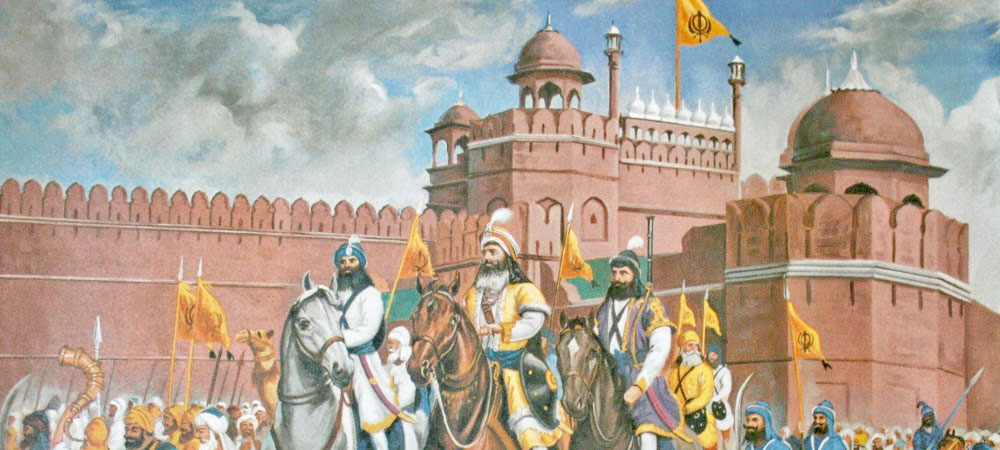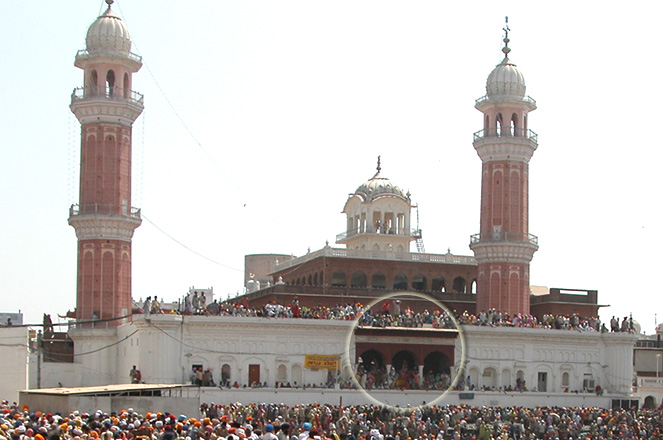
Farsighted leader, valiant warrior Maharaja Jassa Singh Ramgarhia got the Ramgarhia Bunga constructed in the year 1755. Ramgarhia Bunga stood apart from the contemporary buildings due to its architecture, layout, construction marble work and the fresco designs. The Bunga got constructed by S. Jassa Singh Ramgarhia houses Diwan-e Khas accommodating royal seat and the roof of the hall is supported by 44 stones pillars representing a fine work of sikh school of architecture and stone masonry. The royal seat is placed at a level much below the level of Harmandar Sahib, Which testifies the faith and respect, the ruler had in the Guru, his technical skills, his planning & acumen for construction etc. Prison is located underneath the royal seat and the treasury opposite to the same. Proper provision has been made to accommodate official, ministers and generals. A well is also located in the Bunga and arrangements for proper ventilation are also available. Two 156ft. high minarets have also been constructed to ensure due surveillance in and around Sri Darbar Sahib.

In the year 1783, when S. Jassa Singh Ramgarhia along with his other companions, S. Jassa Singh Ahluwalia, S. Baghel Singh and other conquered the Red Fort the coronation marble slab of the Mughal Throne, while sitting upon which emperor Aurangzeb passed edicts for conversion of Hindus, Charges were framed against, Bhai Mani Singh Bhai Matti Das and the Ninth Master, Guru Teg Bahadur Sahib and Sentences were pronounced, was removed by S. Jassa Singh Ramgarhia and brought to Amritsar duly chained and tied with ropes as a prisoner, a war trophy and presented before the Guru, in the court of Guru Ram Dass Sahib and Guru Hargobind Sahib. This slab is 6ft. 3 inch long 4 ft. 6 inch broad and 9 inch thick and is available duly caged on the first floor of the Bunga. (This slab can be seen, passage from the Langer Side)
On March 8 the Sikhs captured Malka Ganj and Sabzi Mandi. Prince Mirza Shikoh, on orders from the Emperor, tried to stop the invaders but suffered defeat, and fled. On March 9 they captured Ajmeri Gate. There was a panic in the city; many took shelter in the fort. Jassa Singh Ramgarhia joined the Sikh forces at the last moment with 10,000 soldiers. As many as 30,000 Sikh horsemen of Baghel Singh’s army were camping at a place now known as Tees Hazari, location of the Delhi High Court.
The Sikhs attacked the Red Fort on March 11,1783. The Emperor and all his guards, in fact every one in the fort, hid themselves. The story goes that an insider informed Sikhs of a weak spot in the wall of the fort, where the soldiers made a hole by ramming it with wooden logs; the place is named as Mori Gate, the location of Inter State Bus terminus (ISBT).

The Sikhs entered the Red Fort, hoisted the kesri Nishan Sahib, and occupied Diwan-e-aam, a key location in the fort, where the Emperor, sitting on the throne, used to have audience with the public. In a symbolic gesture, Jassa Singh Ahluwalia was made to sit on the throne, which made him the Emperor. His old rival and his name-sake, Jassa Singh Ramgarhia, joined by some other chiefs, opposed Ahluwalia’s sitting on the throne. Before the event took an ugly turn, Jassa Singh Ahluwalia gracefully vacated the throne and, thus, avoided a controversy amongst the chiefs at a critical moment.
The Emperor was quick to reconcile with the Sikhs; he offered a treaty and accepted their terms. The Emperor was to pay Rs 3 lakh as nazrana. The kotwali area was to remain the property of the Sikhs. Baghel Singh was allowed to construct gurdwaras on all sites connected with Sikh history. Baghel Singh was to retain 4,000 soldiers till his task was completed; the Emperor was to pay all expenses. The Sikh army left the fort after the treaty.
The Minarets were damaged in 1905 during the earth quake and also during action Blue Star in 1984 were got repaired by S. Jassa Singh Ramgarhia Federation Amritsar in 1995-96 with the active cooperation of S.G.P.C. and honour and prestige of the Panth was restored.